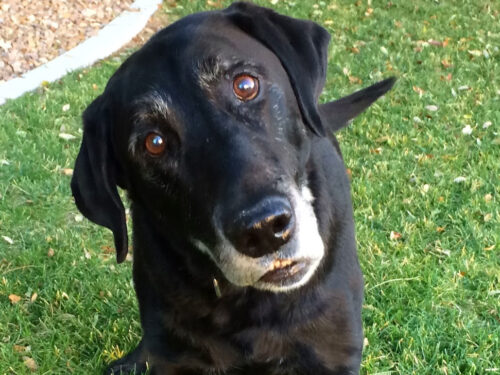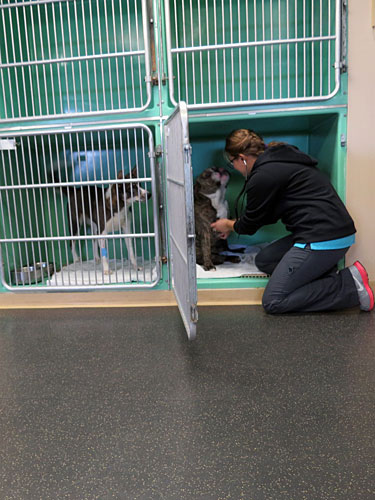 A dog owner called us in a panic because her elderly dog (Shelby) suddenly had difficulty walking and was falling over. She was also tilting her head, the eyes were rotating in a circle and flicking back and forth, and up and down.
A dog owner called us in a panic because her elderly dog (Shelby) suddenly had difficulty walking and was falling over. She was also tilting her head, the eyes were rotating in a circle and flicking back and forth, and up and down.
The owner thought that her dog might be having a stroke. We had her come over immediately. Doctor Neumeister did a thorough exam, because (other than stroke) these symptoms could also point to conditions like infections, tumors, or inflammatory diseases. Dr. Neumeister was relieved to report that her diagnosis was neither of the above concerns but instead was Benign Idiopathic Vestibular Syndrome. It refers to a sudden, non-progressive disturbance of balance. It is more common in older dogs and is also referred to as old dog vestibular syndrome.
This was great news because the symptoms of this condition seem really bad, but it usually gets better on its own with little or no treatment!
 Most dogs recover fully. In some cases, the dog might have mild persistent neurologic deficits, for example, a head tilt or wobbling when they shake their heads. These usually do not affect the quality of the dog’s life.
Most dogs recover fully. In some cases, the dog might have mild persistent neurologic deficits, for example, a head tilt or wobbling when they shake their heads. These usually do not affect the quality of the dog’s life.
We kept Shelby at the treatment area of our hospital for a few days so that we could keep observing her.
The treatment area is also where we monitor post-surgical and emergency clients because we want to be able to be right there at all times, instead of keeping patients in a kennel further away.
The clinical signs of idiopathic vestibular disease are usually some combination of the following symptoms:
- Eyes flicking back and forth, up and down, or rotating in a circle (nystagmus)
- head tilt
- unsteady on their feet and might even fall over
- circling in one direction or rolling across the floor
- Unwillingness to eat (nausea)
- Vomiting
Shelby was able to go home after 2 days and will come back for a re-check in a couple of weeks.
The photo at the top shows a dog with a typical “head tilt”.
Photo Source: Dr. Debbie: Dizzy Old Dogs- Diagnosing Idiopathic Vestibular Disease.
